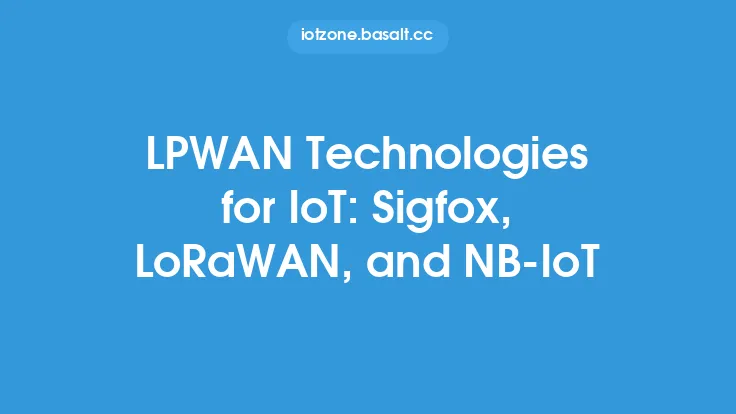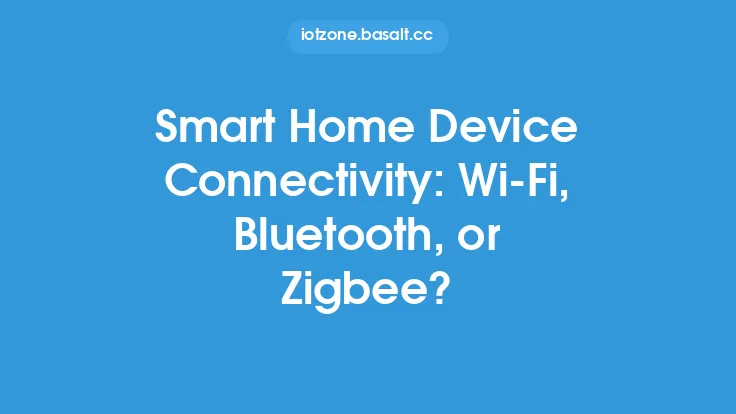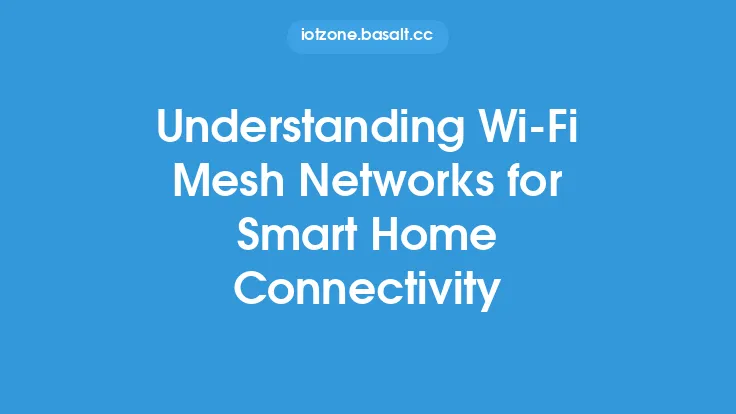The Internet of Things (IoT) has revolutionized the way we live and work, with an ever-increasing number of devices becoming connected to the internet. As the IoT continues to grow, the need for reliable and efficient wireless communication technologies has become more pressing. In this article, we will delve into the world of wireless communication technologies for IoT, exploring the most popular options, including Wi-Fi, Bluetooth, and more.
Introduction to Wireless Communication Technologies
Wireless communication technologies are the backbone of the IoT, enabling devices to communicate with each other and with the cloud without the need for physical connections. These technologies have evolved significantly over the years, with new protocols and standards emerging to cater to the diverse needs of the IoT ecosystem. From smart homes to industrial automation, wireless communication technologies play a vital role in enabling the IoT to function seamlessly.
Wi-Fi for IoT
Wi-Fi is one of the most widely used wireless communication technologies for IoT. It operates on the 2.4 GHz and 5 GHz frequency bands, offering high-speed data transfer rates and a wide range of coverage. Wi-Fi is ideal for applications that require high bandwidth, such as video streaming and online gaming. However, it can be power-hungry, which can be a limitation for battery-powered IoT devices. To address this issue, Wi-Fi HaLow, a low-power variant of Wi-Fi, has been developed specifically for IoT applications. Wi-Fi HaLow operates on the 900 MHz frequency band, offering longer range and lower power consumption than traditional Wi-Fi.
Bluetooth for IoT
Bluetooth is another popular wireless communication technology for IoT. It operates on the 2.4 GHz frequency band, offering low-power consumption and low-cost implementation. Bluetooth is ideal for applications that require low-bandwidth data transfer, such as wearable devices and smart home appliances. Bluetooth Low Energy (BLE) is a variant of Bluetooth that is specifically designed for IoT applications. BLE offers even lower power consumption than traditional Bluetooth, making it suitable for battery-powered devices.
Zigbee and Z-Wave for IoT
Zigbee and Z-Wave are two other wireless communication technologies that are widely used in IoT applications. Zigbee operates on the 2.4 GHz frequency band, offering low-power consumption and low-cost implementation. It is ideal for applications that require low-bandwidth data transfer, such as smart home automation and industrial control systems. Z-Wave, on the other hand, operates on the 908 MHz frequency band, offering longer range and lower power consumption than Zigbee. Z-Wave is ideal for applications that require reliable and low-latency communication, such as home security systems and smart locks.
Other Wireless Communication Technologies for IoT
In addition to Wi-Fi, Bluetooth, Zigbee, and Z-Wave, there are several other wireless communication technologies that are used in IoT applications. These include NFC (Near Field Communication), which is used for proximity-based applications such as mobile payments and access control; RFID (Radio Frequency Identification), which is used for asset tracking and inventory management; and Li-Fi, which is a wireless communication technology that uses light to transmit data. Li-Fi is ideal for applications that require high-speed data transfer and low latency, such as online gaming and video streaming.
Comparison of Wireless Communication Technologies for IoT
Each wireless communication technology has its strengths and weaknesses, and the choice of technology depends on the specific requirements of the IoT application. Wi-Fi is ideal for applications that require high bandwidth, while Bluetooth and Zigbee are suitable for applications that require low-bandwidth data transfer. Z-Wave is ideal for applications that require reliable and low-latency communication, while NFC and RFID are suitable for proximity-based applications. Li-Fi is ideal for applications that require high-speed data transfer and low latency.
Security Considerations for Wireless Communication Technologies
Security is a critical consideration for wireless communication technologies in IoT applications. As IoT devices become increasingly connected to the internet, they become vulnerable to cyber threats. To address this issue, wireless communication technologies must be designed with security in mind. This includes implementing encryption protocols, such as SSL/TLS and AES, to protect data in transit; using secure authentication protocols, such as username/password and biometric authentication, to prevent unauthorized access; and regularly updating software and firmware to patch vulnerabilities.
Future of Wireless Communication Technologies for IoT
The future of wireless communication technologies for IoT is exciting and rapidly evolving. As the IoT continues to grow, new wireless communication technologies are emerging to cater to the diverse needs of the IoT ecosystem. For example, Wi-Fi 6, the latest generation of Wi-Fi, offers higher speeds, lower latency, and greater capacity than its predecessors. Bluetooth 5, the latest generation of Bluetooth, offers longer range, higher speeds, and lower power consumption than its predecessors. Additionally, new wireless communication technologies, such as Wi-Fi HaLow and Li-Fi, are being developed to address the specific needs of IoT applications.
Conclusion
In conclusion, wireless communication technologies are the backbone of the IoT, enabling devices to communicate with each other and with the cloud without the need for physical connections. From Wi-Fi and Bluetooth to Zigbee and Z-Wave, each technology has its strengths and weaknesses, and the choice of technology depends on the specific requirements of the IoT application. As the IoT continues to grow, new wireless communication technologies are emerging to cater to the diverse needs of the IoT ecosystem. By understanding the different wireless communication technologies available, developers and manufacturers can design and build IoT devices that are reliable, efficient, and secure.





